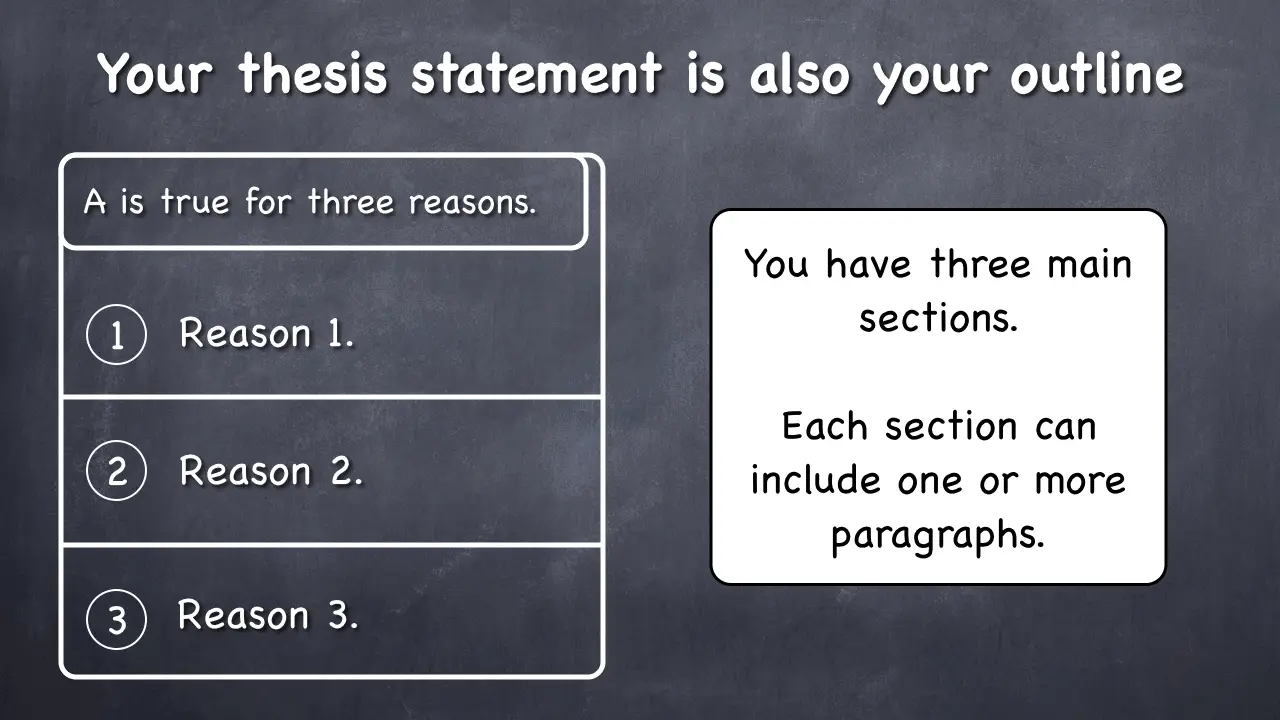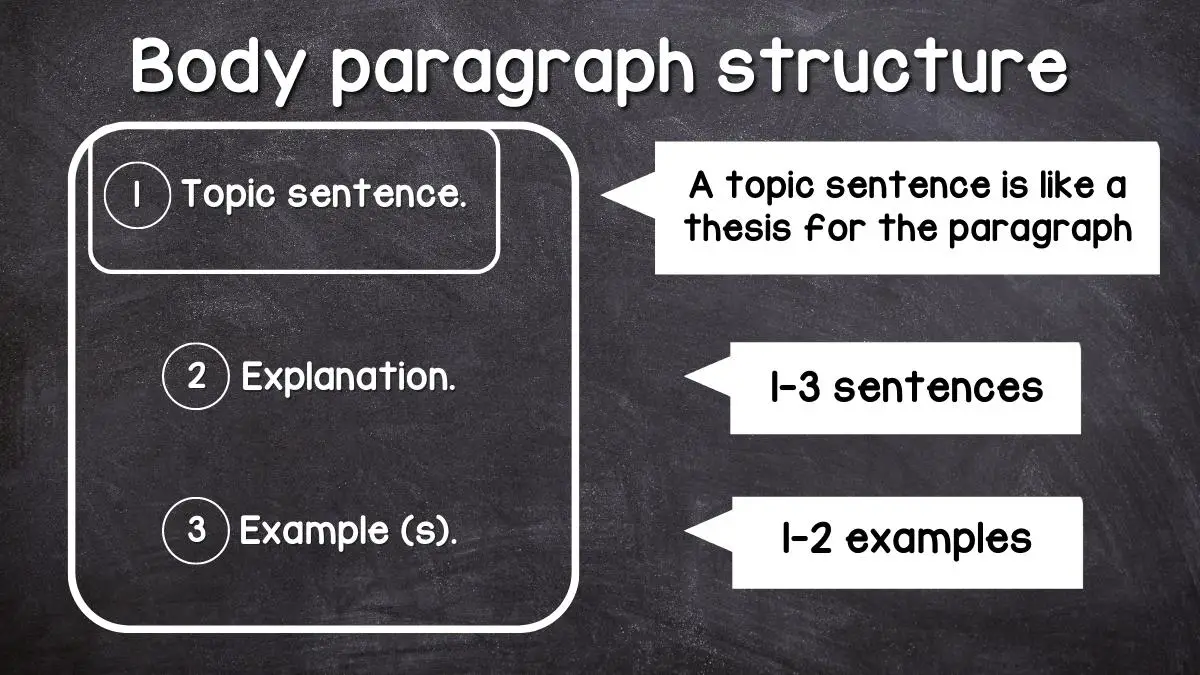
Are you looking for an easy and quick way to write an essay about your name? Then this is the perfect tutorial for you!
I’m Constance, and in this tutorial, I will show you how to write an essay about your name in six simple steps. I will also give you an example of such an essay as we go through the process step by step.
Let’s begin!
Step 1: Choose your main idea.
If you want to organize your thoughts and present them clearly and concisely in an essay, you need to choose your thesis — a main idea for your essay. Simply take a stand and write it down as a simple sentence.
What do you want to say about your name? Do you like your name? Do you think it’s interesting? Whatever you think of will act as your thesis.
For example, you can say, “I love my name.” Note that we kept it really simple. By doing so, we can clearly think of the next things we need for the essay.
Step 2: Think of three supporting ideas.
Trying to write an essay on only one undivided idea or thesis will get you stuck.
So, you need more than one idea. Two ideas are better than one. Three is even better. But four may be too many because you’re just writing a simple essay.
So, coming up with three supporting ideas is the best method. Why? Because three is the perfect number the brain can handle. And it works all the time! We call it the Power of Three.
So, let’s use the Power of Three to keep our ideas flowing.

The Power of Three is a three-part structure that divides your main idea into three distinct supporting points. It helps create your body paragraphs.
Let’s apply it to an essay about your name.
Ask yourself – “why do I love my name?” And write down three answers. Here are mine:
- I like its Latin origin.
- I like how my parents came up with it.
- It sounds great.
Using ideas that are too similar to each other may cause writer’s block. So, note that our three supporting points are totally different from one another.
Keep them distinct and simple to avoid running out of things to write down the line.
Step 3: Write your thesis statement.
Now that we have a clear picture of the essay’s structure, we can write a thesis statement.
When writing a thesis statement, take your main idea and its supporting points and write them out as a sentence or complete sentences in a single paragraph.
Once you’ve written your thesis statement, you have a nice outline for your essay.

Here’s an example of a thesis statement:
“I love my name because I like its Latin origin, the story of how my parents came up with it is pretty cool, and it sounds great, too.”
Note how clear the statement is. We started with our thesis, and the three supporting points sound like great ideas to back it up. So, it works.
Great! Now, we’re ready for the next step.
Step 4: Write the body paragraphs.
After dividing our main idea into three distinct points, we can easily write three body paragraphs for our essay.
When writing a body paragraph, you should start with a topic sentence summarizing the entire paragraph. Then, briefly explain it and illustrate it using examples.

Note that your paragraphs should go from general to specific.
In a body paragraph, your topic sentence (the first sentence) is the most general statement. After writing your topic sentence, you will unpack it by writing more specifically, using an explanation and examples.
Here are examples of body paragraphs for our essay:
Paragraph 1
One of the few things I like about my name is its etymology. It has a Latin origin, rooted in the word “constantem,” which means “faithful” or “steadfast.” It is a name that represents perseverance and dedication regardless of the challenges ahead. I could not be more proud and grateful for my name’s origin. It reflects my determined personality and my loyalty to the people I love.
Paragraph 2
I also love that I was named after my grandmother Constancia. I appreciate my mom and dad naming me after her – someone I loved so much. My grandmother was an amazing woman. She raised eight kids despite her humble status in life, which highlighted her steadfastness. And she was faithful to her family and supported it however she could.
Paragraph 3
My name has a certain sonorous quality to it with its consonants that roll off the tongue. I am thankful for the sound of my name. It has a beautiful melody to it that I always love to hear. Every time I hear it, it brings me a sense of warmth and joy and puts a smile on my face.
Note how each paragraph proceeds from a general statement to more specific points.
Now that we’ve written our body paragraphs, we are ready for the next step.
Step 5: Write the introduction and conclusion.
Introduction
An introduction can be just one more general sentence, after which you should simply proceed to your thesis statement, which includes your thesis and three supporting points.

Here’s an example of an entire introductory paragraph:
Many of us may not think much about it, but our names are a part of our identity and can have a lasting impact on us. I love my name because of its Latin origin, the story of how my parents came up with it, and its cool sound. My name means “constant” or “steadfast” in Latin, which reflects my determined personality. It came from my grandmother’s name, Constancia, whom I loved so much. And it just sounds amazing, even if I only say so myself.”
Conclusion
If you want a time-proven, easy, and quick way to write a conclusion for your essays, I recommend restating what you stated in your introduction using different words.
Here’s an example of a conclusion for our essay:
My name is an important part of my identity and has a special place in my heart. It has a meaningful linguistic origin from the Latin word constantem, meaning “steadfastness.” It is a special reminder of my grandmother, Constancia. And it has a nice ring to it that brings me joy.
Now, we’re ready for the final step.
Step 6: Proofread.
The final step in writing an essay is going back and proofreading it. Look out for:
- Typos
- Misspellings
- Grammatical errors
- Irrelevant material (stuff that doesn’t belong in the essay)
- Contradictions (make sure you don’t contradict your own points)
And we are done writing an example of an essay about a name.
I hope you learned a lot in this tutorial. Now go ahead and write an essay about your name!
